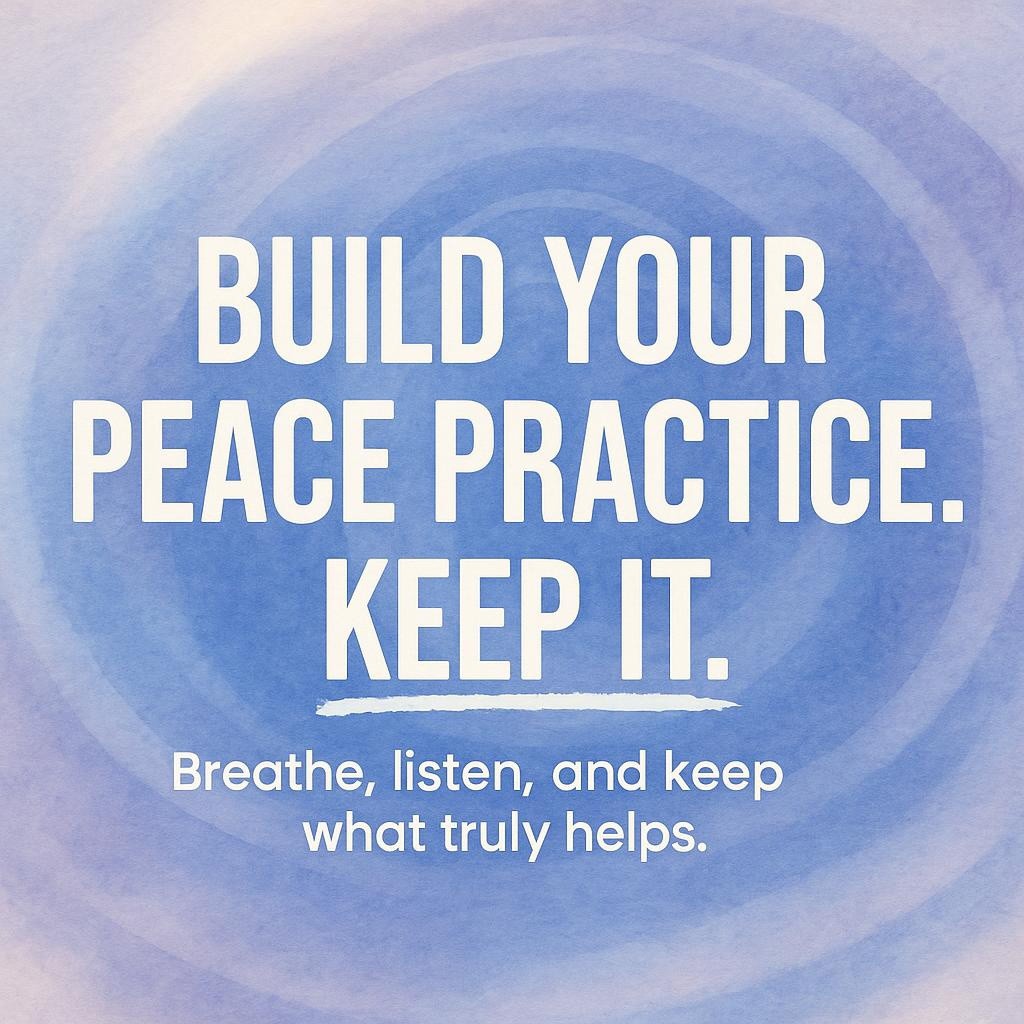Personalize and Persist: Designing a Peace Practice You’ll Actually Keep
The moment the paramedics lifted Karen Lee Cohen onto a gurney, she felt calm. “I didn’t think it was my time, but I was okay if it was.” That scare didn’t harden her. It widened her trust—in skilled doctors and in her inner guidance. In Let’s Be Peace: 20 Unique Paths to Healing Yourself and Spreading Peace in the World, she names the compass plainly: “Love and trust yourself.” Be “your own best doctor,” not by avoiding care, but by listening to your inner GPS and choosing your team wisely .
Why Let’s Be Peace stands out
This book isn’t one voice; it’s a circle. Karen curates healers from many disciplines—energy work, EFT, Ayurveda, feng shui, and more—so you can find tools that fit your life. Her invitation is simple and liberating: “embrace what resonates with you and discard what does not.” She repeats the deeper promise: the peace you grow inside naturally spreads, “one person at a time” .
Where to start when you want peace now
Karen’s “starter kit” is small, steady, and doable:
- Breathe with structure. Try breathing in to the count of 4-hold for 4-breathe out to the count of 4 hold for 4 or 4-7-8 counts to settle your system and clear your head .
- Ask your gut. Breathe, ask your question, and notice how your body feels. If it feels off, wait or choose another path .
- Forgive—yourself and others—so you can move forward with less weight .
- Practice gratitude morning and night. Karen does hers before getting out of bed and again before sleep .
These are not theories. They’re daily moves that make peace tangible.
Three habits readers keep because they work
1) Breathe on purpose
Counted breaths help you land in the present so you can hear yourself more clearly. Karen’s two rhythms—4-4-4-4 and 4-7-8—are easy to remember and quick to use anytime you’re tense or scattered .
2) Rinse your thoughts
One contributor calls it “mental hygiene.” Just as you shower your body, you can clean your thoughts. Notice the patterns. Choose words and thoughts that match who you want to be. This gentle shift steadies mood and behavior over time .
3) Gratitude—with the “because”
Writing “I’m grateful for … because …” deepens the feeling and raises your energy. The “because” matters. It’s simple, specific, and powerful as a morning or nighttime ritual—and a mood reset on hard days .
Let your inner GPS lead
Karen returns to one core truth: “You are your own best doctor.” Ask your body; listen for a real answer. Build a team that respects your role in the process . Energy healer Susan Kennard shows how: breathe into your heart and ask, “What do I need to know about this pain (or pattern)?” Then jot a few lines. Journaling doesn’t need to be long—just honest. Over time, you’ll see what helps and what doesn’t .
Spiritual counselor Karin Hubah adds something many skip: quiet time. Meditation, yoga, or simple stillness opens a doorway to calm and clearer choices. Silence may be uncomfortable at first, but it trains you to hear guidance without all the noise .
Bring peace into your space and actions
Feng Shui practitioner Tricia Shea offers a friendly rule: “Be what you want to have.” Want support? Be supportive. Want peace? Create it in how you arrange your space and how you show up. It’s not decoration—it’s the feeling your environment creates, and it’s personal to you .
Some readers even “count” with the phrase “Let’s Be Peace” during yoga or stretching—one Let’s Be Peace, two Let’s Be Peace. It’s a tiny shift that keeps attention on what matters most .
Tools for hard days (when pretending won’t help)
Brenda Michaels writes about facing cancer by “accepting what is.” Not resignation—clarity. Fighting reality fed fear. Choosing calm softened her system so help and answers could reach her. Peace, she says, is a healing salve that allows the next wise step to appear .
And when fear spikes or tension climbs, several contributors point you back to breath, to stepping away from lower-energy inputs, and to choosing discernment: Is this message fear-based? Is it important right now? If not, let it wait and return to what matters today .
Make it yours—and keep it
Karen doesn’t hand you a rigid plan. She suggests setting your own “barometer” to review what’s working and what isn’t. Maybe you check monthly, maybe quarterly. Keep the keepers. Let go of practices that don’t feel good anymore. One size doesn’t fit all, and trusting your gut is the point .
A simple plan inspired by the book
- Choose two or three practices that already feel right—counted breathing, heart-centered questions, gratitude with “because”—and use them daily in small, realistic moments .
- Once a week, note what lifted your mood or energy and what felt forced. Keep what helps. Release what doesn’t. Karen’s own words apply: “embrace what resonates … discard what does not” .
- When you add anything new—healer, class, practice—pause and ask: Does this empower me? Do I feel respected and supported? If not, move on. Seek those who “walk their talk” and lift you up .
What changes when you personalize peace
- Stress patterns loosen. With steady breath, kinder thoughts, and forgiveness, your system gets room to rest. Clarity follows .
- Choices get simpler. You stop chasing every method and notice what truly helps in your real life .
- Your calm spreads. Karen’s faith is steady: when you are peace inside, it radiates outward—quietly, consistently, person to person .
“Love and trust yourself.” Start there. Breathe with count. Ask your heart a clear question. Write one “because” of gratitude. Keep what helps. Let the rest fall away. And let’s be peace—together, one honest breath at a time .
